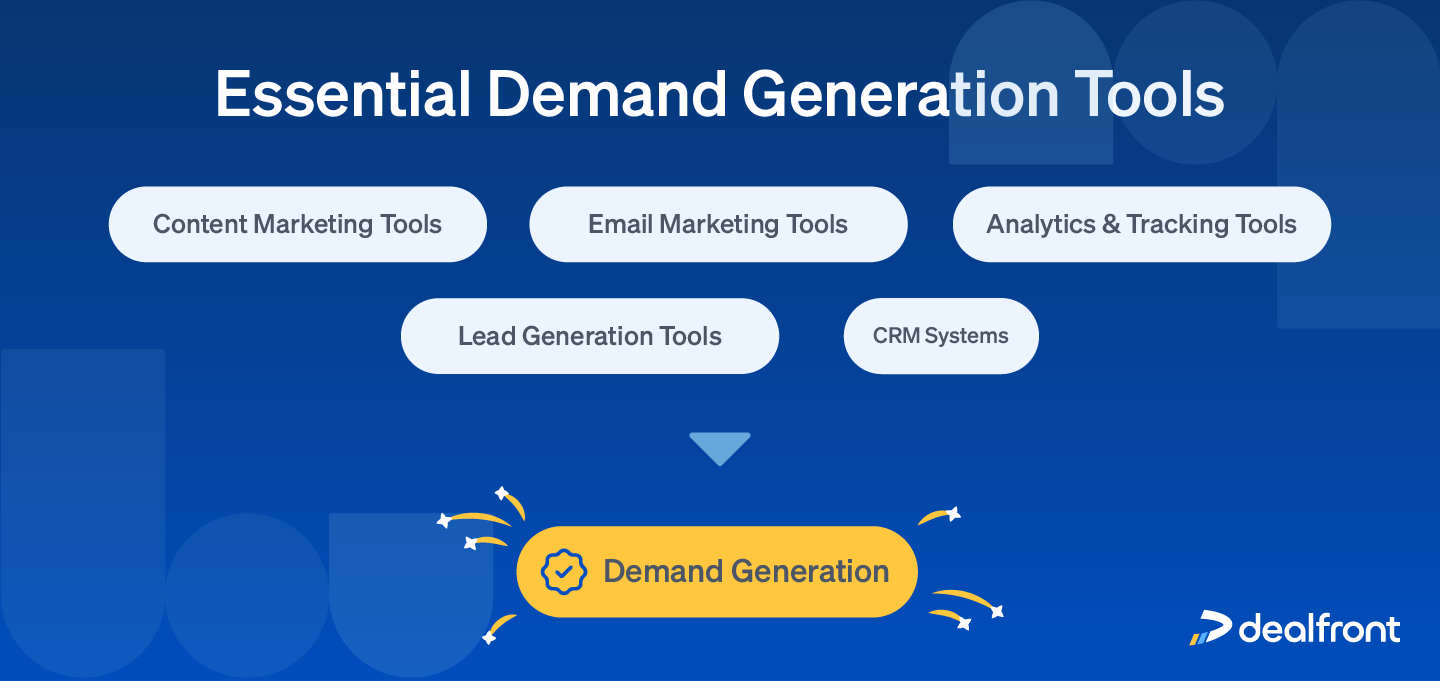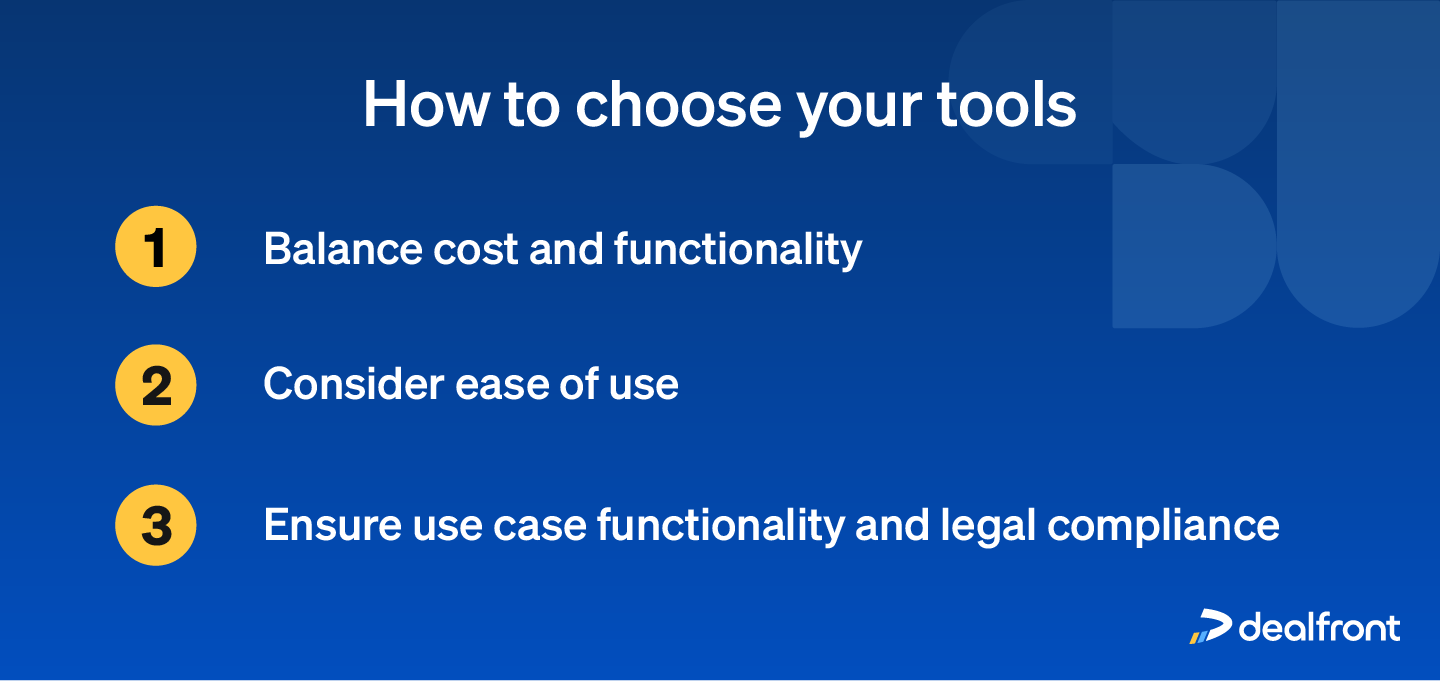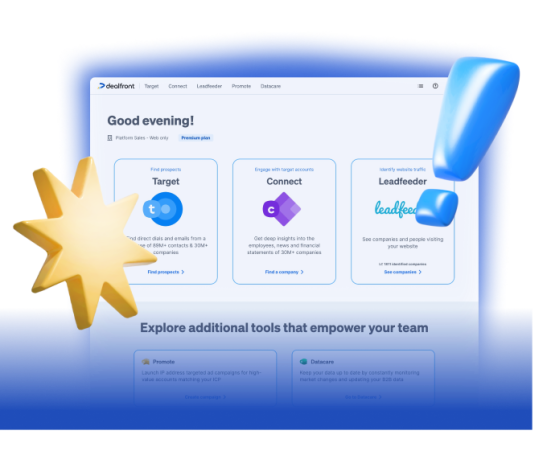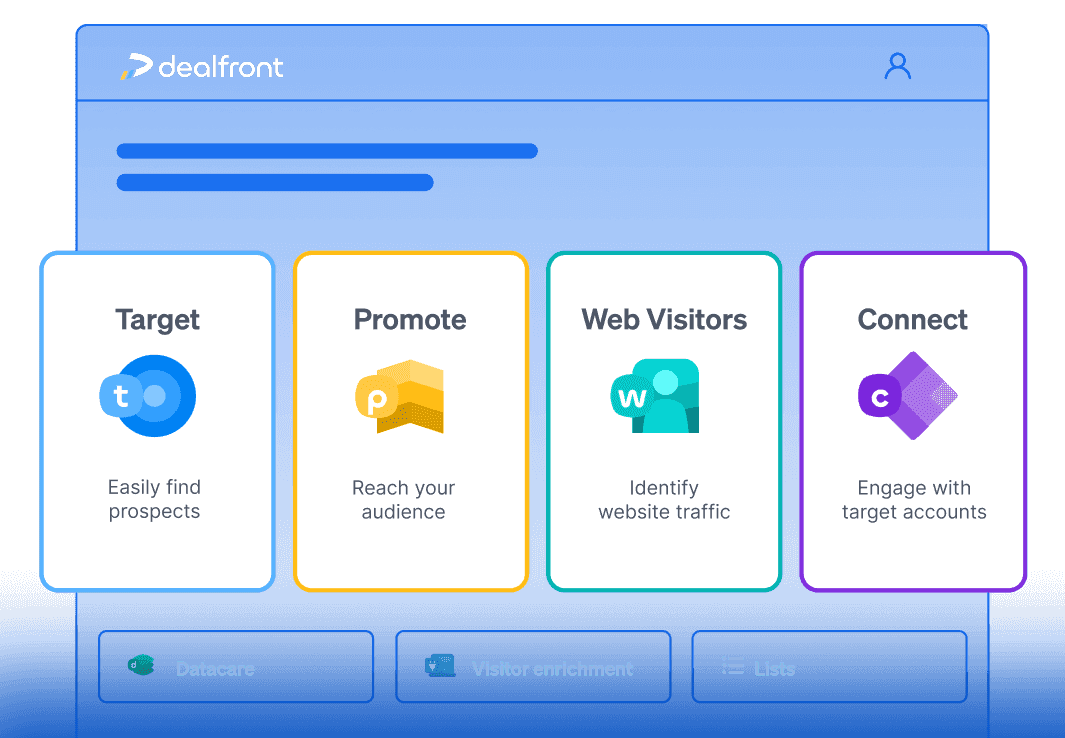One common question is central to nearly every business’ marketing strategy: “How do I stand out from other brands and capture the attention of buyers?” The B2B marketing landscape is ever-changing, and the one-size-fits-all marketing strategies of the past are becoming obsolete.
Now more than ever, marketing teams need to adapt their go-to-market and demand-generation strategies to adapt to shifting trends within the buyer’s journey.
Demand generation is the process of building awareness and interest in your product, service, or brand. The goal is to target potential customers outside of your current base and ensure they know what you’re offering, building brand awareness with the intention of converting your audience into paying customers.
While the concept of demand generation might be easy to understand, putting it into practice with a robust tool stack requires a clear understanding of the marketing tool landscape related to demand gen.
You’ll need to consider:
The differences between demand generation and lead generation
The purpose of demand generation
The tools you can use to help with demand generation
How to choose which B2B demand generation tools are right for your business
Key goals of demand generation
At first glance, it can be easy to conflate demand generation with lead generation. They both aim to strengthen your brand and result in increased profitability. However, they do so via different means and with different timing.
A traditional B2B marketing funnel model starts with capturing potential customers’ attention and then focuses on piquing their interest in your brand’s solutions. From there, you want to stoke that desire into an interest in working with you through careful messaging that ultimately leads them to sign a contract.

The B2B Marketing Funnel: Top of the funnel | Middle of the funnel | Bottom of the funnel
Demand generation happens at the very top of the funnel (TOFU), at its origin point. While lead generation begins in that same section, you could say that it relies heavily — if not entirely — on proper demand generation. The right demand generation tools build awareness of your product or service, paving the way for lead-generation efforts to identify potential customers and narrow down sales opportunities.
With effective demand generation driving prospect engagement, that lead generation then progresses to lead nurturing and turning those leads into paying customers. The more paying customers — especially happy ones — the greater your brand’s market reach. Also, the greater your market reach, the stronger you will appear in the public eye compared to competitors.
In recent years, proactive demand generation has become more important than ever before. More millennials and Gen Zers are entering into buyer roles within businesses, and the shape of B2B sales is shifting to match their preferences. As buyer personas evolve, the focus becomes more digital and buyer-driven, with buyers in less direct contact with vendors and doing more independent research.
To keep up with these changes, you’ll need the right tools to get your brand out in front of potential customers on the platforms where those customers are already searching for solutions.
Types of demand generation tools
Effective demand generation requires diverse efforts and strategies to meet your goals. The right tools for the job range from well-known ones such as email automation software to breakthroughs like increasingly accurate visitor identification. Key tools fit into five categories: content marketing, email marketing, analytics and tracking, lead generation, and customer relationship management tools.
Content marketing tools
Content marketing is a type of digital marketing that focuses on sharing content — from written content like blogs and articles to visual content like videos and infographics — publicly online to attract your target audience’s attention and build their interest in your brand’s authority in your space.
This form of inbound marketing helps bring you leads already familiar with your brand and offerings. From creation to distribution, using the right tools can streamline your content marketing efforts to maximize your chance to grab your audience’s attention.
CMS (content management systems) offer user-friendly interfaces and functionality for crafting, publishing, and managing content on a website. This allows businesses to create attractive marketing materials and capture engagement with ease. Tools you may already know or use include Wordpress or Typo3.
SEO (search engine optimization) tools help analyze the structure and wording of content for search engine visibility. Proper SEO drives your business closer to the top of the results for relevant searches. Try one of the following tools to keep your SEO sharp: ahrefs, Semrush, or Clearscope
Social media management platforms take much of the frustration out of handling social media accounts. These platforms can compile multiple accounts on a single dashboard or program and distribute content consistently across all social media presences. Hootsuite or Buffer can really help streamline this process for you.
Email marketing tools
Email remains one of the most direct ways to reach potential customers. These tools help personalize your emails and focus them on the demographics where they will most likely find engagement.
Email marketing automation software is an absolute necessity for any business. This software reduces the repetitive labor of sending mass amounts of emails or manually managing the right cadence for your targeted email campaigns. Some even boast additional functionality, such as personalized signatures, to help increase engagement.
List management tools help personalize emails by sorting contacts according to various criteria, helping you sift qualified leads into proper messaging flows. This allows emails to target recipients in specific demographics or industries. Some of these also track which emails recipients have opted into or out of receiving, ensuring that your marketing emails are legally compliant with any applicable regulations.
A/B testing platforms allow you to send out different versions of an email to different groups. Results are then compared to analyze the responses to each version sent, showing which was more effective at engaging recipients.
Analytics and tracking tools
Powerful analytics tools such as Leadfeeder by Dealfront provide insight into who visits a brand’s website and their activity while there. Collecting and handling these metrics allows you to optimize marketing strategies, allowing marketers to concentrate efforts on more successful leads.
Google Analytics collects visitor information such as their demographic and what referred them to the site. It also provides more advanced insights into how visitors interact with your website. You can see where they go once they arrive, how long they stay, and where their journey ends. It will provide helpful statistics, such as the bounce rate—how many visitors leave a site without going to other pages.
Marketing automation analytics work in conjunction with information gathered from other sources. They take scattered pieces of information and find trends based on various criteria. These trends allow marketers to fine-tune their strategies, identifying the most promising leads and reducing wasted effort.
Heatmap and session recording tools track user interaction with each page on your website. These can be interactions such as where most visitors click or how far down they scroll. The information they provide shows which parts of a page receive the most and least attention, helping find areas for improvement.

Lead generation tools
These tools work to attract and engage potential leads. They rely more on input from potential customers, forming a more passive lead generation method. Despite this passivity, they are still valuable to demand-generation efforts.
Landing page builders help easily design pages for lead capture. Most have a visually-focused interface, allowing marketers to create an appealing and functional webpage without the need for extensive web design knowledge.
Web forms and pop-up tools prompt visitors to enter their contact information in real time and at the ideal moment—like when they reach a landing page. Targeting potential leads when they are most engaged will increase the number of email addresses collected.
Lead-scoring software can measure success rates against various characteristics and then check those characteristics among newer potential leads to identify which are most likely to become paying customers, usually by assigning a numerical score. This helps prioritize more direct marketing toward leads with higher scores, driving higher conversion rates from leads to customers.
GDPR compliant B2B Data providers like Dealfront's Target allows you to create a list of your target companies based on your Ideal Customer Profile (ICP). In Target, you can filter according to criteria like company size, location, industry, or even Trigger Events such as relocation or expansion. The tool helps you refine your target customers and allows for more personalized outreach.
CRM systems
CRM (customer relationship management) systems focus more on direct customer interaction. This includes the storage of customer data and records of interactions.
CRM software keeps and arranges up-to-date customer information. This can include basic contact information, subscribed mailing lists, and open customer support tickets. A quick glance can tell a salesperson all they need to know about a potential or current customer.
Sales enablement tools tie together most of what we’ve gone over, providing a centralized resource for marketers and salespeople to utilize along every step of the customer journey.
It’s easy to feel overwhelmed by the sheer amount of B2B demand generation tools available. Many of them offer similar solutions to problems, often with overlap between them. That’s why knowing how these tools work together and ensuring they integrate is almost as important as the tools themselves.
Integrations and workflow automation
Seamless integration of your demand generation tools ensures they function efficiently. You’ll have to put extra work into porting data between different platforms if your programs can’t natively share data with each other. This stalls the process and requires additional manual labor to compensate for the lack of integration.
Fortunately, most common tools boast the necessary functionality for this integration. They are often ready to integrate with other popular programs and applications. You should always do your due diligence when evaluating tools to ensure compatibility.
Various workflow automation platforms also exist to streamline this integration further. One example is software that takes email addresses entered into landing page pop-ups and automatically loads them into your CRM software. This starts a profile for that customer without the need for manual input. Knowing the landscape of what tools exist and what key considerations to remember when shopping around will help you choose the right process for your strategy.
What to consider when choosing tools
Budget constraints are often the first consideration any business makes when purchasing software tools. Marketing teams need to balance cost and functionality when deciding on a purchase. Don’t scrimp on the functionality you’ll need just to save a bit of money. However, keep pricing in mind and resist the urge to splurge on features that aren’t completely necessary and end up straining your budget.

Considerations when choosing your tools
Regarding potentially wasting money, remember that these tools are not one-size-fits-all — just like the rest of your B2B demand generation needs. Be sure to research the limitations and scale of the tools you’re purchasing. Also, they should also be able to keep up with your brand’s expected growth. For instance, don’t sign onto a subscription plan for your email automation tool with a capacity of 10,000 emails per day if you’re already getting close to that limit.
It is also vital to keep ease of use in mind. Everyone wants a robust list of features, but if you have difficulty introducing them to your team, you might not use those features. Make sure that the programs are user-friendly and simple to teach to employees who’ve never seen them before.
Additionally, you want to ensure any tools you bring on board have the functionality to handle specific use cases for your industry. There could also be regulations on how you use these tools—this is often the case when you have access to sensitive customer data, as there are requirements for protecting it. Know what specific functionality you'll need when using these tools, and make sure they meet those requirements.
The demand generation tools you put in place will set the stage for your marketing and sales teams for the foreseeable future. It’s vital to view them from every angle and make the right decision for your business’s unique needs.
The right tools for your business
From CRM to analytics, demand-generation tools are indispensable assets to any growing brand. These tools provide the means to attract, engage, and convert potential customers, but only if used effectively. Remember that the effectiveness of your demand-generation efforts depends on choosing the right tools for your situation.
The right tools can drive your marketing campaigns to success, while the wrong ones can leave you lagging behind competitors. The sooner you assess your unique needs, the sooner you can optimize your demand generation strategy and build your brand. By harnessing these tools' power, you can drive demand and fuel your business's growth and success.







